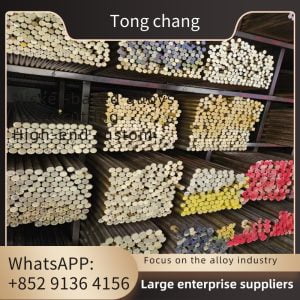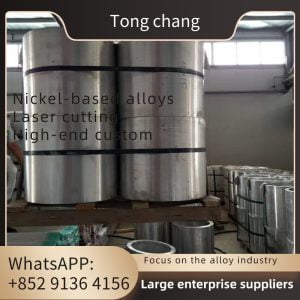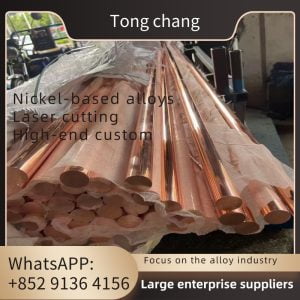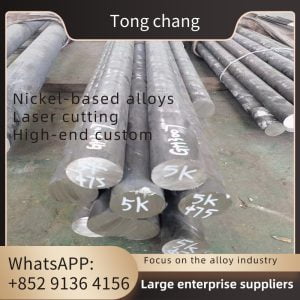| Product Name: | L Type Finned Tube | Tube Material: | Carbon Steel, Stainless Steel, Alloy Steel, Copper Etc… |
|---|---|---|---|
| Fin Material: | Aluminum,cooper And Steel | Tube O.D.: | 12.70 Mm To 38.10 Mm |
| Tube Thickness: | 1.25mm And Above | Tube Length: | Can Customized |
| Bare Ends: | As Per Client Requirement | Fin Thickness: | 0.3mm, 0.35mm, 0.4mm, 0.45mm, 0.55mm, 0.60mm, 0.65mm |
| Fin Height: | 9.8 Mm To 16.00 Mm | Fin Density: | 236 FPM (6 FPI) To 433 FPM (11 FPI) |
| Applications: | Condenser, Heat Exhcnager, Marines Engineering, Chemical Pipeline, Etc. | ||
| High Light: | 0.3mm L Type Embedded Fin Tube, Embedded Fin Tube ASTM A179, Aluminum Heat Exchanger Finned Tube | ||
ASTM A179 Carbon Steel Seamless Tube AL. Wound L Type Fin Tube For Heat Exchanger
The ‘L’ FIN TUBE, ‘LL’ FIN TUBE, ‘KLM’ FIN TUBE also known as Wrap Around Fin Tube. This type of Fin Tube widely finds acceptance where the Heat Transfer Temperature is relatively lower and the cost needs to be controlled. It also relatively lesser in cost as compared to the ‘G’ Type Fin Tube and the Extruded Type Fin Tube. The L-type fin tubes typically have fins that are perpendicular to the base tube, forming an L-shaped profile when viewed from the side. This design maximizes the contact area between the fluid inside the tube and the surrounding fluid or atmosphere, allowing for more effective heat transfer. These Fin Tubes find application in AIR FIN COOLERS, RADIATORS etc. and are preferred in Industries like Power Plants, Chemical Industries, Petroleum Refineries, Chemical process Plants, and Rubber Plants etc.
Specification
| Manufacturing Range ‘L’ FIN TUBE, ‘LL’ FIN TUBE, ‘KLM’ FIN TUBE (WRAP AROUND FIN TUBE) | ||
| Sr. No | Particulars | Range |
| 1 | Base Tube Material | Stainless Steel, Carbon Steel, Alloy Steel, Titanium, Copper, Duplex Stainless Steel, Inconel etc. (all material in the theoretical limit) |
| 2 | Base Tube Outside Diameter | 12.70 mm to 38.10 mm |
| 3 | Base Tube Thickness | 1.25mm And Above |
| 4 | Base Tube Length | 500 mm Min To 15000 mm |
| 5 | Fin Material | Aluminum, Copper, Stainless Steel, etc. |
| 6 | Fin Thickness | 0.3mm, 0.35mm, 0.4mm, 0.45mm, 0.55mm, 0.60mm, 0.65mm |
| 7 | Fin Density | 236 FPM (6 FPI) to 433 FPM (11 FPI) |
| 8 | Fin Height | 9.8 mm to 16.00 mm |
| 9 | Bare Ends | As per Client Requirement |
| 10 | Manufacturing Capacity | 5,00,000 Meter Per Annum |
| Main Fin tube test equipments | |||||
| Hydraulic test lines up to 40MPa. | |||||
| One under water pneumatic test line. | |||||
| Computer controlled microscope projector. | |||||
| One computer controlled pull-off-off tester. | |||||
| One penetration mirror microscope. | |||||
| One ultrasonic thickness gauge. | |||||
| One Fin Firmness Test equipment |
| Inspections and Tests:G-fin; L-fin; LL-fin; KL-fin; Extruded-fin Finned Tubes | |||||
| 1.Chemical Composition | |||||
| 2.Mechanical Properties | |||||
| 3.Hydrostatic Test | |||||
| 4.Pneumatic Test | |||||
| 5.Boroscopic Inspection | |||||
| 6.Eddy Current Test | |||||
| 7.Tensile Test (only for bimetallic tube) |
Features of L Type Finned Tube
1. The trapezoidal section formed by the calendering of L Type Finned Tube for heat exchanger is consistent with the distribution of heat flow density, the tubes are tightly combined, and the thermal efficiency is high, which eliminates the contact heat caused by the gap between the tubes and the finned tube. resistance, the fin spacing is uniform, and the heat transfer performance is good.
2. The tube can withstand temperatures up to 150°C and there is no risk of atmospheric corrosion or thermal stress.
3. The L-type finned tube provides the contact area between the fin strip and the surface of the tube to protect the tube wall from atmospheric corrosion.
4. This L TYPE design is much more economical than LL, KL or even G-embedded types.
5. Maximum operating temperature: 230°C
Extruded finned tubes application
1.Operating temperatures less than 300°C;
2.Offshore or other remote applications;
3. Heat pipes;
4. Dry air coolers for air, gas or oil;
5. Air to air heat exchangers for HVAC applications;
6. Air dehumidification in air treatment plants
7. Eenergy recovery in air exhaust system.
8. Chemical and petrochemical industry
9. Food processing plants and refrigeration technology







